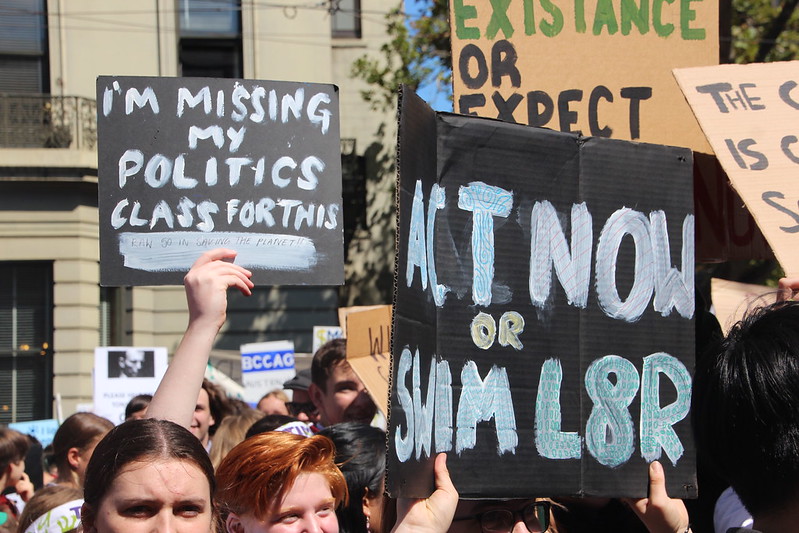COP26 is over – here’s how the UK can keep up momentum on climate action

A blog post from Professor Piers Forster
The Glasgow climate pact is sealed and COP26 is fading into memory. The UK’s presidency of the 26th UN climate change summit yielded mixed results, from the first mention of fossil fuels in a UN climate declaration and an agreement on rules for trading emissions credits internationally, to the blocking of a funding facility which would compensate developing countries for loss and damage caused by climate change.
While delegates have left Glasgow, the UK’s responsibilities as COP president are far from over. Before handing over to Egypt for COP27 in November 2022, a series of high-level decisions are needed to ensure the UK keeps the electric vehicle pedal held firmly to the floor.
I’m a scientist on the Climate Change Committee – independent advisers to the UK government on net zero policy. We advised the UK to bolster its domestic targets and policies for reducing emissions to set an example going into COP26. This included a recommendation in December 2020 to revise the UK’s nationally determined contribution (or NDC) to emissions reductions by 2030.
Now we’ve published further advice on what the UK government must do over the coming year to ensure that momentum from COP26 is not lost. This includes working with other nations on a number of fronts from improving flows of financial aid to developing countries, strengthening commitments to cut emissions by 2030 and building international cooperation on compensation for loss and damage.
Glasgow to Sharm El-Sheikh
One thing the UK hosts did well at COP26 was to acknowledge the stark reality of the latest climate science. While COP26 affirmed the importance of keeping the target of limiting global warming to 1.5°C alive, current policies mean the world is set to pass it in the next decade, reaching 2.7°C by the end of the century.
To move the dial, the UK must pressure G20 nations to set stronger commitments in 2022 to cut emissions by 2030, and develop policies which could deliver them. The country’s own pledge is to cut emissions by 68% on 1990 levels by 2030. This is already about as ambitious as the Committee on Climate Change thinks it can realistically be while remaining credible. But it can be strengthened in other ways.
For instance, this NDC could be made legally-binding. The government could also rule out meeting its target with the use of offsets, like promises to plant trees elsewhere to compensate for keeping oil and gas fields open. It could count contributions from actually reducing emissions, and removing CO₂ from the atmosphere with trees or carbon capture and storage technology, separately. The NDC could also include targets for individual sectors of the economy, using the government’s own net zero strategy.
Rich countries should look beyond cutting emissions domestically to consider targets for reducing emissions from the goods and services they import. In the UK, these consumption emissions are larger and falling slower than emissions generated domestically. Quantifiable targets for adapting to the effects of climate change within the country would also be useful.

Rich countries like the UK often overlook the carbon cost of their imports. Anita van den Broek/Shutterstock
The UK could put half of its climate finance contributions to developing countries towards projects which help countries adapt – something which has been neglected for too long. Restoring its 0.7% GDP promise on overseas aid would help send the message that the government is serious about meeting its commitments. It can also do this by entering into a serious dialogue on what rich countries can do to support those around the world suffering climate harm today.
The government can also accelerate its own cuts to emissions by phasing out the “inefficient fossil fuel subsidies” mentioned in the Glasgow Climate Pact text. By maintaining a low price for carbon in the UK’s emissions trading scheme, the government is effectively subsidising the continued burning of fossil fuels. No fossil fuel subsidy should be considered efficient and therefore worth keeping.
Boris Johnson’s administration could boost skills training and job creation in industries like offshore wind energy and raise awareness of its net zero strategy among the public by describing the changes people will notice in everyday life.
It could also supplement its current plans by helping people make changes to their diets, implementing measures to reduce aviation demand by improving rail travel, for instance, and axing road building projects that are not compatible with net zero emissions.
Independent, evidence-based committees like ours can track the delivery of commitments by governments and report on their policies and progress. We recently launched the International Climate Councils Network to coordinate action worldwide. We hope this can help build strong and enduring international partnerships that tell governments what they need to do and how to do it.![]()
This article is republished from The Conversation under a Creative Commons license. Read the original article.
Main image: “Act Now or swim L8R – Melbourne climate strike – IMG_4104” by John Englart (Takver) is licensed under CC BY-SA 2.0
